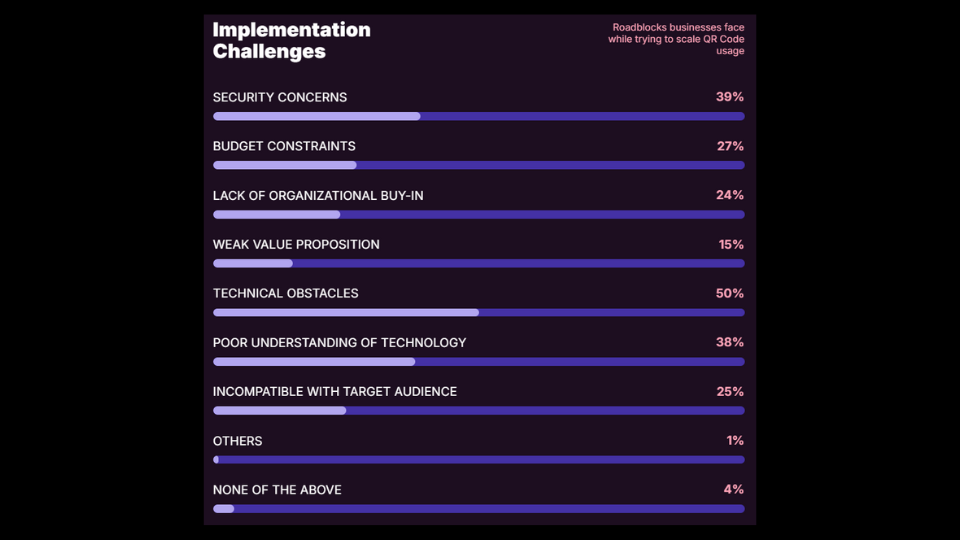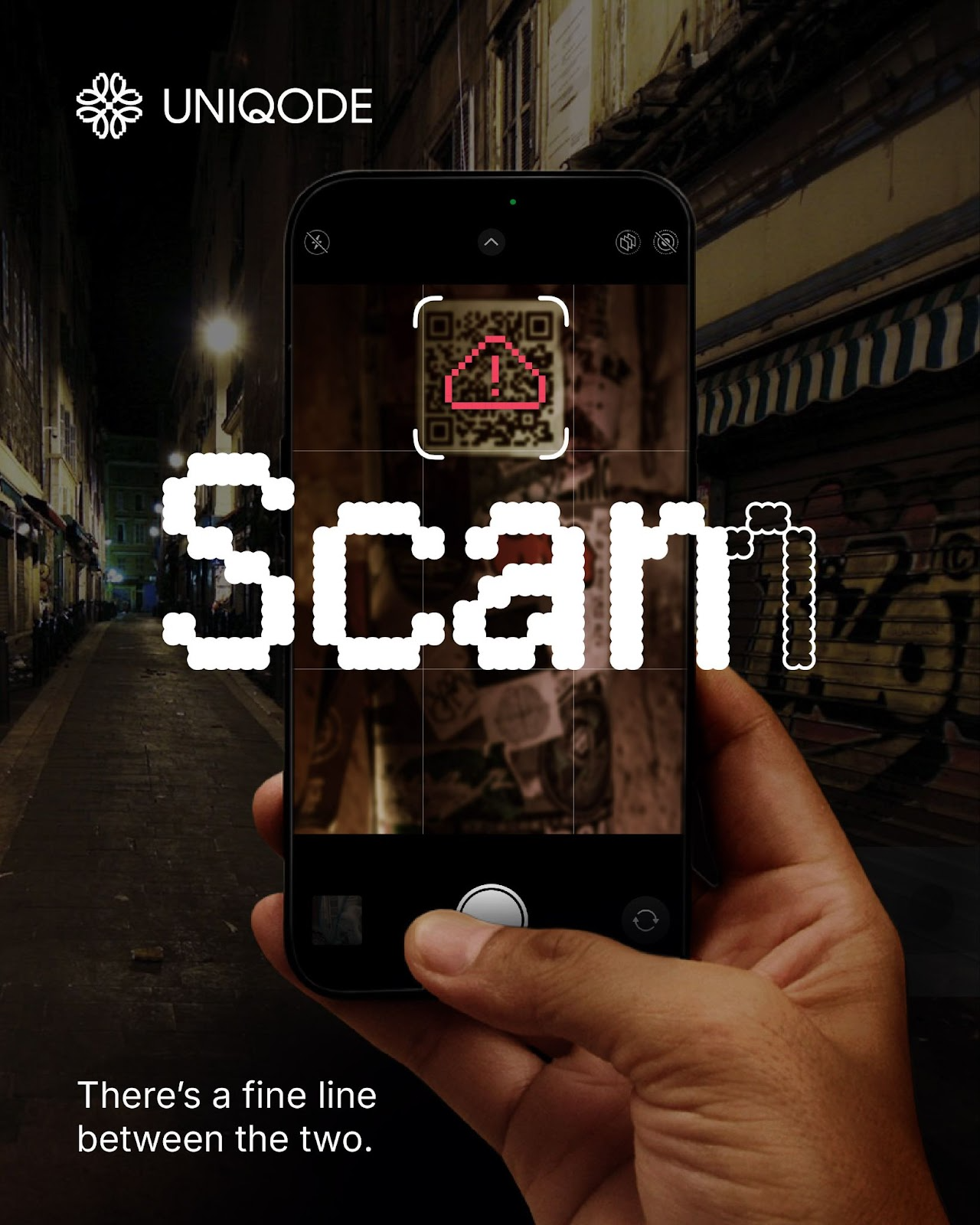The QR Code Customer Engagement Playbook

If your QR Code gets scanned, why are you losing the customer?
A customer scans your QR Code. You’ve captured their attention. They’re engaged, curious, and ready to act. But the page loads slowly, and the content feels like an afterthought. Interest drops, and they leave. A potential conversion, signup, or customer relationship is lost in seconds.
This happens more often than you think.
According to Uniqode’s State of QR Codes report, 84% are more likely to scan when the use is clearly relevant, so brands can not afford to treat the post-scan experience lightly. What started as a promising moment can quickly turn into a missed opportunity if the follow-through isn’t smooth.
That is why enterprise teams are no longer asking whether QR Codes work. They know they do. Instead, they’re asking why their results are not matching expectations. The answer often lies in execution: how the experience was designed, delivered, and measured.
In this article, we’ll give you a head start on post-scan expectations, how top brands turn QR Codes into high-performing touchpoints, and why most strategies fail quietly in plain sight.
How the market sees QR Codes now
QR Codes are no longer about adoption but about implementation.
Most businesses already use QR Codes in some form. But not all see them for what they really are: a long-term channel with compounding value for campaigns.
According to the report, 95% of businesses say QR Codes help them gather valuable first-party data. And nearly half of them are doing that at scale, with more than 10,000 customer interactions tracked through QR Codes.
The data above are not vanity scans; they help brands refine their product packaging, positioning, content strategy, and channel performance.
Large enterprises—especially those earning over $100 million in revenue—are leading the way. Many now manage over 1,000 codes and treat QR Codes as part of their engagement stack, alongside email and paid media. For them, QR Codes are dynamic, measurable, and integrated into customer journeys from offline to online.
If you think QR Codes are a way to send people to a landing page, think again.
A few uncomfortable truths about QR Code adoption
For all the buzz around QR Codes, most organizations are still getting the basics wrong. Adoption might be widespread, but maturity isn’t. As expectations rise, the cost of missteps gets harder to ignore. Here are a few things to take note of:
Look beyond static QR Codes
If your QR Code points to a URL you can’t update, you’ll most likely struggle to use it for other purposes. Static QR Codes might be fast to create, but they don’t scale. If the offer changes, the URL breaks, or the content becomes outdated, your only option is to reprint. That’s not operationally sustainable.
This is one of the core reasons we have dynamic QR Codes at Uniqode, knowing that campaigns grow, content shifts, and customer expectations change faster than printed assets ever can.
79% of market leaders have switched to using Dynamic QR Codes and it has a strategic impact in their customer journey and scanning experiences.
This shift also reinforces an important reminder: understanding what users expect post-scan can help brands design experiences that feel intentional, not transactional.
Scan count is a vanity metric
We can agree that impressions don’t equal engagement, and scan volume doesn’t tell you what worked, but the real value lies in post-scan behavior. Did the user stay on the page? Did they sign up, convert, or bounce? The teams that win aren’t tracking scans, they’re tracking outcomes.
Bad QR Codes are worse than no QR Codes
A code that doesn’t scan, goes to a broken page, or delivers irrelevant content does more harm than good. It erodes trust and signals carelessness. Customers don’t blame the tech; they blame your brand and probably won’t scan again. For your business, it’s like blowing the one opportunity you had to impress a new user.
The QR Code gap: Where strategy fails in execution
Our survey revealed that more organizations have embraced QR Codes in some form. Although they struggle with implementation.
In reality, many teams underestimate what it takes to make QR Codes work at scale.
According to our report, 44% of businesses face serious implementation roadblocks, not because they lack ideas, but because their tools, teams, or systems aren’t built for long-term success.
Some of the biggest blockers?

What that tells us: A QR Code isn’t a plug-and-play feature. It’s a cross-functional effort, and if the infrastructure can’t keep up, the experience crumbles.
Even the basics are hard to get right. Poor scanning performance, inconsistent messaging, or a mismatch between the QR Code and its destination lead to frustration on both ends. Weak analytics or a lack of integration just add to the frustration.
So while many companies have QR Codes, few have QR Codes that actually drive growth.
Fix it with scalable QR Code systems built for engagement
Solving the implementation gap doesn’t mean starting over; it’s simply understanding how your QR Code infrastructure supports your business.
Here’s what top-performing teams are doing differently:
- They invest in platforms, not one-off tools
Modern teams need QR Code generators that offer features like analytics, version control, or centralized management; some outdated QR Code generators don’t. That’s why 60% of organizations say their current infrastructure is holding them back. Leaders are switching to platforms that support dynamic QR Codes, role-based access, and API-first architecture that can handle over two million monthly requests.
- They prioritize security early
QR Codes engage with the customer directly, so trust is non-negotiable. The best systems use advanced encryption, real-time scan monitoring, and GDPR-compliant hosting. Unsurprisingly, 45% of businesses now demand stronger encryption and access controls as part of their QR Code stack.

- They integrate, automate, and iterate
QR Codes don’t exist in isolation. The moment a scan happens, the experience should feel connected to everything else, from CRM to QR Code analytics. The report shows that 49% of organizations are asking for better integration with their existing systems. This is also why they use data from every interaction to refine messaging, update flows, and double down on what’s working.
- They start with one high-impact use case
Trying to roll out QR Codes everywhere at once leads to bottlenecks. But starting small with a single, measurable use case builds internal momentum. From tracking conversions from in-store signage to collecting data from product packaging, the key is to prove value quickly and scale up from there.
- They treat QR Codes as an owned channel
You control the entry point, user experience, and the outcome. That makes QR Codes one of the few fully owned, first-party data channels left. Leaders use it to capture intent-rich signals, drive loyalty flows, and personalize follow-ups in ways cookies and ads can’t touch.
For QR Code success, the gap between what teams want to do and what their systems allow separates strong execution from missed opportunity.
Don’t just own QR Codes, own the experience
QR Codes used to be a checklist item, but now they sit at the intersection of customer experience, data strategy, and digital infrastructure.
The brands that win from here will not be the ones placing more QRs. They will build better systems, faster experiences, smarter data, and tighter integration. To truly scale success, marketers must also sustain engagement beyond campaigns, building QR Code-driven experiences that outlast one-off promotions or product launches.
Uniqode’s State of QR Codes report breaks down how you can rejig your engagement playbook using QR Codes.
👉Read the full report here to understand the choices you can make to make a splash.
